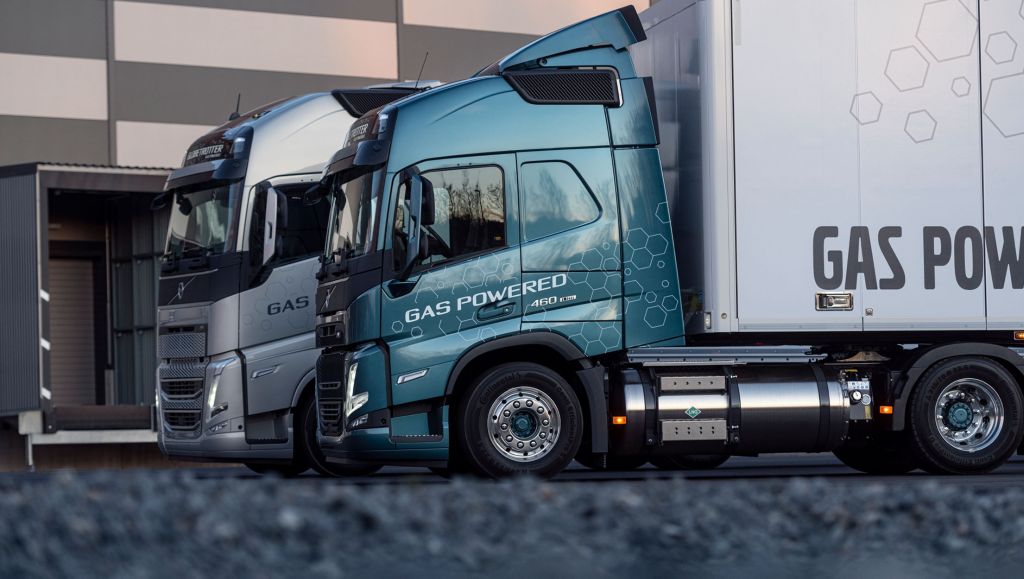Gas-powered trucks for your business and for the climate


Proven reduction in CO2 emissions
The Volvo FH LNG and Volvo FM LNG have proven their ability to deliver lower CO2 emissions. The reduction can be up to 20 per cent compared to standard diesel (tank to wheel) – and this is without compromising performance and drivability. If Bio-LNG is used, then the CO2 reduction can be up to 100 per cent tank to wheel. Demand for Bio-LNG is growing together with increased production capacity and the Volvo Trucks’ objective is 100% Bio-LNG usage for gas driven trucks latest 2040.
The uniqueness of Volvo Trucks’ LNG driveline is that it is based on proven diesel technology. In general, LNG is produced by cooling down methane gas to below -162° Celsius, where it liquefies and reduces in volume. When in operation, the liquid gas is heated, turned into compressed gas and sent to the engine for combustion. However, in Volvo Trucks’ LNG-powered vehicles, a small amount of diesel or HVO is used to help ignite the gas.
Total Cost of Ownership (TCO) indicates strong business case
Despite its higher purchase price, the Volvo FH LNG and Volvo FM LNG remain cost-efficient due to their low fuel consumption compared with other gas engines, the low cost of LNG compared to diesel, and various government incentives in many markets.
Refueling an LNG truck will require some guidance at first but ultimately is no more complex or time-consuming than refueling with diesel. Due to the extremely cold temperature of the fuel, safety equipment such as full coverage clothing, gloves and face visor must be used.
In some markets, the LNG infrastructure and network of refueling stations is limited, however this is changing rapidly. “Government incentives and investments are having a strong impact and will make LNG viable for more and more companies,” says Persson. “In Europe, there are currently 400 LNG refueling stations, and this is expected to reach 750 by 2025.”
Connected services can provide unique LNG support
As long as the number of fueling stations remains limited, route planning will be important when operating an LNG truck. To assist customers, Volvo Connect – Volvo Trucks’ portal for all digital services and tools – has been adapted to fully meet the needs of LNG vehicles. Now it is possible to use the Positioning service to locate all LNG-powered trucks and monitor the fuel levels – both LNG and diesel – in real time. The service can also be used to locate LNG refueling stations, as well as workshops that are certified to service LNG trucks.
“The purpose is to make it easier for customers to plan routes and refueling, so they do not have to worry about running out of fuel,” says Johan Rundberg, Service Owner Fleet and Transport, Volvo Trucks. “Volvo Connect can also be used for monitoring fuel efficiency and CO2 emissions, for individual trucks and whole fleets.”